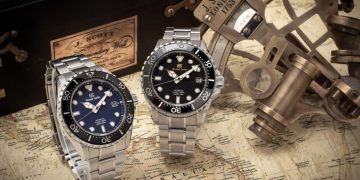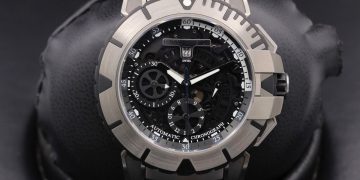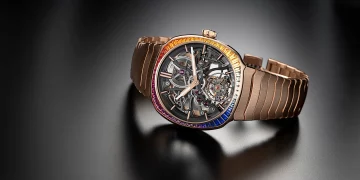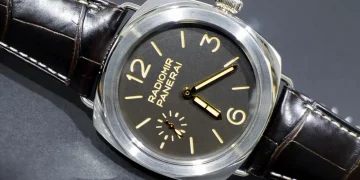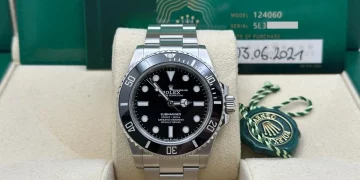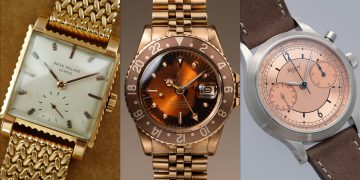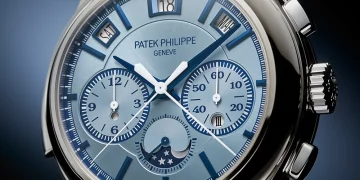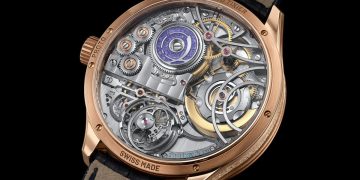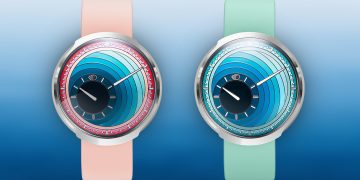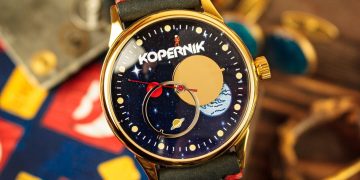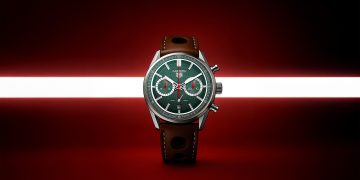The Omega Speedmaster, often referred to as the “Moonwatch,” is more than just a timepiece; it is a symbol of innovation, exploration, and achievement. With its rich history, technological advancements, and timeless design, the Speedmaster has influenced not only the world of horology but also popular culture, inspiring a diverse array of enthusiasts from astronauts to collectors, race car drivers to everyday watch lovers. It’s a watch that transcends its function as a mere tool for timekeeping to become an icon, representing the intersection of human ambition, precision engineering, and timeless style.
In this detailed article, we will explore the cultural significance of the Omega Speedmaster, tracing its influence across various fields, its impact on watchmaking, and its lasting legacy. From its connection to space exploration to its rise as a collector’s item, the Speedmaster has become far more than just a chronograph—it has shaped watch culture in profound ways, making it one of the most influential and beloved watches of all time.
The Origins of the Omega Speedmaster
The Omega Speedmaster was introduced in 1957 as part of Omega’s “Professional” series of watches, designed specifically for professional use in fields like motorsport, aviation, and space exploration. It was marketed as a chronograph—combining both timekeeping and stopwatch functions—which immediately caught the attention of those in need of precision timing, such as race car drivers. The model’s tachymeter bezel, which could calculate speed based on elapsed time, made it an ideal tool for motorsports enthusiasts.
However, it was not until the mid-1960s that the Omega Speedmaster’s place in history—and in popular culture—was solidified. In 1965, after a rigorous selection process, NASA chose the Omega Speedmaster as the official chronograph for its astronauts. The watch passed a series of intense tests, including extreme temperatures, vibrations, and G-forces, proving its durability and reliability. This moment marked the beginning of the Speedmaster’s close association with space exploration and the iconic Apollo missions.
In 1969, when Neil Armstrong and Buzz Aldrin took the first steps on the moon during the Apollo 11 mission, they were both wearing Omega Speedmasters. This event, and the Speedmaster’s continued role in subsequent space missions, earned it the moniker “Moonwatch.” The Speedmaster’s legacy was now inextricably linked to one of humanity’s greatest achievements: landing on the moon.
The Omega Speedmaster’s Cultural Influence on Space Exploration
The Omega Speedmaster’s influence on space exploration is perhaps its most widely known and culturally significant connection. As the first and only watch to be worn on the moon, it became a symbol of human exploration, innovation, and the desire to push the boundaries of what was thought possible.
Symbol of Human Achievement
The Speedmaster’s role in the Apollo program transformed it into a symbol of human achievement and ambition. For many, wearing a Speedmaster is a way to pay homage to the astronauts who made history by traveling to the moon. The watch represents not just a leap in technology, but a cultural shift that saw humanity striving to achieve the unimaginable.
In addition to the Apollo 11 mission, the Speedmaster was used on all subsequent manned space flights, including the Apollo 13 mission, during which the astronauts used their Speedmasters to assist in critical timing and navigation maneuvers that ultimately saved their lives. This practical use further cemented the Speedmaster’s reputation as a reliable and essential tool in space exploration.
The Speedmaster as a Cultural Icon
The cultural impact of the Omega Speedmaster extends beyond the realm of horology and into popular culture. The “Moonwatch” has been featured in countless films, documentaries, and books about space exploration, often symbolizing the idea of adventure, scientific achievement, and technological progress. The Speedmaster’s sleek and functional design has also made it a staple in fashion circles, with celebrities and designers often citing it as a timeless piece.
The Speedmaster has come to represent a sense of exploration—not just in the literal sense, but in the metaphorical one as well. It embodies the idea of pushing the limits, of seeking to go further and do more, whether in the context of space or in life itself. For this reason, the Speedmaster has become a watch that is more than just an object; it is a part of the cultural fabric that binds together those who share a passion for discovery and adventure.
The Speedmaster’s Influence on Watch Culture and Design
Beyond its association with space exploration, the Omega Speedmaster has left a lasting mark on the world of horology. Its design and technological innovations have influenced countless other timepieces and have inspired watchmakers to pursue similar goals of precision, durability, and functionality.
Timeless Design and Versatility
The Speedmaster’s design, which has remained largely unchanged since its introduction, is one of the key reasons for its enduring popularity. Its clean, legible dial, tachymeter bezel, and three subdials for chronograph functions have made it a quintessential chronograph. The watch has a versatile aesthetic that works both as a tool watch and as a statement piece, making it equally at home in a professional setting as it is on the wrist of a casual wearer.
The Speedmaster’s design has influenced not only Omega’s own future models but also other watch brands that sought to emulate the same mix of ruggedness and elegance. Its understated, timeless appearance has made it a design benchmark for the industry, and many chronograph designs from various manufacturers continue to be inspired by the Speedmaster’s iconic layout.

Technological Innovation and Movement Development
The Speedmaster’s influence is also seen in the technological advancements it introduced, particularly with its chronograph movement. The watch’s original manual-winding Caliber 321 movement, followed by the Caliber 861 and 1861, was highly regarded for its reliability and precision, setting the standard for other chronograph movements. These movements were critical not only for timing accuracy but also for the durability required in demanding environments like space and motorsports.
In more recent years, Omega has continued to push the boundaries of horological technology with the introduction of the Co-Axial escapement in the Speedmaster. The Co-Axial escapement, which reduces friction and enhances the precision of the movement, has influenced the entire watch industry, with many watchmakers adopting similar innovations in their own timepieces. The introduction of the Master Chronometer certification has further cemented the Speedmaster’s technological superiority, ensuring that it meets the highest standards of precision and performance.
Collectibility and the Speedmaster’s Impact on Watch Collecting
In the world of watch collecting, the Omega Speedmaster has become a cornerstone. Its historical significance, particularly its connection to space exploration, has made it a highly sought-after item for collectors. Over the years, limited edition models, vintage versions, and models with unique characteristics (such as “Pre-Moon” Speedmasters) have become valuable pieces in the horological market. The Speedmaster’s legacy as a tool watch, paired with its enduring design, has ensured its place as one of the most collected watches in the world.
The Speedmaster has also influenced the larger culture of watch collecting, inspiring a sense of connection to the past and an appreciation for craftsmanship. Many collectors find that owning a Speedmaster is not just about possessing a valuable timepiece, but about being part of a larger cultural movement that appreciates the intersection of art, technology, and history. The Speedmaster’s iconic status has contributed to the rise of watch culture as a hobby, with enthusiasts regularly discussing the various models, their unique features, and the rich history behind them.
The Omega Speedmaster in Popular Culture and Fashion
While the Speedmaster’s primary association is with space exploration, it has also made significant inroads into popular culture and fashion, cementing its status as a symbol of style and sophistication.
Hollywood and Entertainment
The Speedmaster has appeared in a number of Hollywood films and television shows, often serving as a symbol of intelligence, precision, and adventure. In the 1995 film Apollo 13, the Speedmaster is featured prominently, reinforcing its connection to space travel. More recently, the Speedmaster has made appearances in various spy and action films, where its rugged and refined design fits perfectly with characters who embody strength, intellect, and purpose.
Celebrity endorsements have also played a role in elevating the Speedmaster’s cultural cachet. Iconic figures such as actor George Clooney, Formula 1 driver Michael Schumacher, and astronaut Chris Hadfield have all been seen wearing the Speedmaster, further solidifying its status as a symbol of achievement and style.
Fashion and Design Circles
In the fashion world, the Omega Speedmaster is often regarded as a classic accessory, bridging the gap between functional tool watches and high-end luxury timepieces. Its clean lines and elegant yet robust design make it a versatile choice for fashion-conscious individuals who seek both style and substance. The Speedmaster’s ability to transition seamlessly between different settings—be it a formal event, a casual outing, or an adventurous expedition—has made it a favorite among designers and influencers.
In recent years, Omega has collaborated with various designers and luxury brands, further cementing the Speedmaster’s place in high fashion. The introduction of limited edition models, such as those inspired by space missions or with unique color schemes and materials, has also contributed to the Speedmaster’s growing appeal in design circles.
The Speedmaster’s Enduring Legacy and Future Influence
As we look to the future, the Omega Speedmaster shows no signs of losing its cultural or technological significance. Its legacy as the first watch worn on the moon will always be a central aspect of its appeal, but the Speedmaster’s continued evolution in terms of design, technology, and materials ensures that it remains relevant to both collectors and new generations of watch enthusiasts.
Continuing Innovation
Omega’s commitment to innovation is evident in the Speedmaster’s ongoing updates. The introduction of the Caliber 3861 movement, with its Co-Axial escapement and Master Chronometer certification, marks a new chapter in the Speedmaster’s history, one that blends traditional mechanical watchmaking with cutting-edge advancements in precision and performance.
The use of new materials, such as Sedna gold and ceramic, also signals Omega’s dedication to pushing the boundaries of watchmaking. The future of the Speedmaster looks bright, with Omega continuing to innovate while maintaining the core values that have made the Speedmaster a cultural icon.
A Symbol of Aspiration
Ultimately, the Omega Speedmaster has become much more than just a watch. It is a symbol of aspiration, achievement, and exploration. Whether worn by an astronaut, a race car driver, a fashion icon, or a dedicated collector, the Speedmaster embodies the pursuit of excellence and the spirit of adventure. As the world of horology continues to evolve, the Speedmaster will undoubtedly remain a cornerstone of watch culture, inspiring future generations to push the boundaries of what is possible.
In conclusion, the Omega Speedmaster’s influence on watch culture, its technological innovations, and its cultural significance have made it an icon in the world of horology. From its historic role in space exploration to its enduring impact on design and fashion, the Speedmaster continues to shape the narrative of modern watchmaking. It is a watch that not only tells time but also tells a story—one of human achievement, technological advancement, and timeless style.


